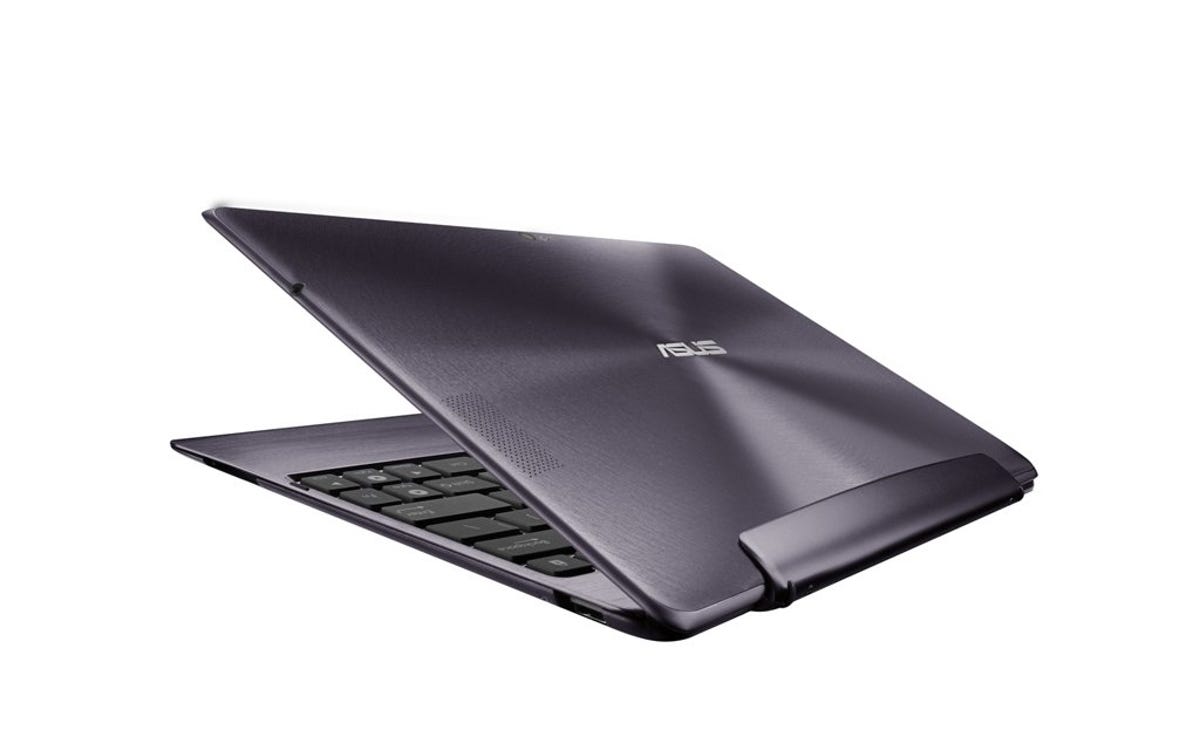Not seven months after its debut, the Asus Eee Pad Transformer is consistently one of the most popular tablets on CNET. So, it came as a surprise when I heard that Asus was preparing a follow-up tablet so soon after the original.
On Tuesday, Asus officially unveiled the Eee Pad Transformer Prime. Touted as the world’s first tablet to house the Nvidia Tegra 3 quad-core CPU, the Transformer Prime enters the tablet market slim and trim, with a 0.33-inch depth and 1.29-pound weight, making it thinner and lighter than the iPad 2.
The aluminum chassis comes in both Amethyst Gray (gray and purple) and Champagne Gold (silver and gold) and is designed to resist water and oil, making it fingerprint resistant.
The Prime includes two cameras: a 1.2-megapixel front camera and an 8-megapixel rear camera with LED flash. The rear camera includes a f2.4 aperture (matching the iPhone 4S) and records 1080p video with continual flash. Sound-wise, the Prime will make use of Asus’ SonicMaster sound technology, which should deliver higher-quality sound than what we’ve come to expect from tablets.
The tablet comes preinstalled with Honeycomb 3.2 but is upgradable to Ice Cream Sandwich. It also includes 1GB of RAM, a microSD card slot, audio jack, and Micro-HDMI port. There’s 802.11 b/g/n Wi-Fi support, Bluetooth 2.1+EDR, a gyroscope, and GPS. The mobile dock will include a USB port and an extra SD card slot.


Nvidia
Apps like Asus WebStorage, MyNet, MyCloud, File Manager, and Asus sync will carry over from the Transformer, and Asus will also include SuperNote and Polaris Office as preinstalled apps.
So far, the iPad 2 has consistently had the longest battery life of any tablet in our tests, but the Transformer Prime may give it a run for its money, thanks to the Tegra 3’s low-power companion core.
The companion core uses less power than the four main cores and takes on less-strenuous tasks like video playback. The four higher-performance cores step in when performance-hungry tasks like gaming and Web page loading are necessary. This sharing the load will conceivably consume less battery power and, according to Asus, will allow the Transformer Prime to match the iPad 2’s 12-hour battery life; with the mobile dock attachment, it could eclipse any tablet battery life before it, lasting up to 18 hours. We’ll be sure to let you know how true to life that claim is, once we’ve received a review unit.
Like the original Transformer, the Prime’s 10.1-inch display has a wide viewing angle, In-Plane Switching (IPS), and has a 1,280×800-pixel resolution. It will feature a “Super IPS” mode, which turns up the brightness to 600 candelas per square meter, which should make for a better outdoor reading experience.
Asus claims it’s also decreased the screen touch delay time by 100 percent, resulting in a noticeably more responsive screen than the first Transformer.


ASUS
We’ll have to wait a few weeks to get an idea of how the Transformer Prime actually functions in a real-world environment, but on paper at least, Asus seems to be making all the right moves.
The Asus Transformer Prime launches in December at $499 (32GB) and $599 (64GB) in the U.S., with the optional mobile dock accessory priced at $149.
Stay tuned soon for a full review once we’ve actually acquired a unit.



